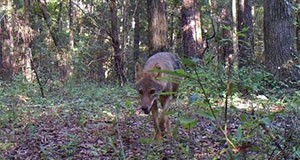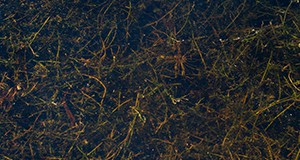
Hydrilla, which was originally introduced to the state as an aquarium plant, was intentionally planted in canals by aquarium plant dealers in the 1950s and quickly escaped cultivation. In addition to being one of the world’s worst aquatic weeds, the species is Florida’s most intensively managed submersed plant. Hydrilla is a federally listed noxious weed and a prohibited aquatic plant in Florida, making cultivation, sale, and possession of the species illegal. This 7-page fact sheet discusses the classification, characteristics, habitat, and management of hydrilla. Written by Lyn A. Gettys and Stephen F. Enloe, and published by the UF Agronomy Department, February 2016.
http://edis.ifas.ufl.edu/ag404
Category: Environment
New and Revised Featured Creatures, April 2016
Nitrogen Fertilizer Recommendations for Sugarcane Production for Sugar on Florida Sand Soils
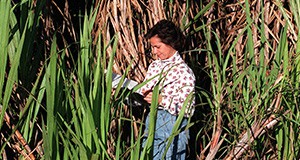
Sands used in sugarcane production in Florida have low levels of organic matter, silt, and clay, and they provide little N through mineralization of organic matter and possess a low capacity for N retention as a result. Because these soils are highly leachable, N must be managed well to ensure adequate nutrition for the crop as well as protection of groundwater. This new 4-page fact sheet is part of the Sugarcane Handbook, and it discusses sand soils used in sugarcane production, sugar yield response to nitrogen, and revised nitrogen recommendations. Written by J. Mabry McCray, Kelly T. Morgan, and Les Baucum, and published by the UF Agronomy Department, February 2016.
http://edis.ifas.ufl.edu/sc101
Biology, Control and Invasive Potential of Giant Reed (Arundo donax L.) in Florida
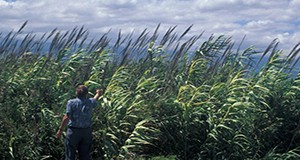
Arundo donax (L.), also known as giant reed, is a tall, fast-growing, bamboo-like grass that under ideal conditions can reach a height of up to 30 feet and a stem diameter up to 1.5 inches. Giant reed is invasive and difficult to control and has caused economic losses in California, Nevada, Utah, Arizona, New Mexico, and Texas. This species was introduced to Florida over 100 years ago and is currently naturalized in at least 26 of the 67 Florida counties. So far giant reed has not proved problematic in Florida, but recent permitting of its planting for bioenergy feed stock may increase the risk that it could naturalize into plant communities in Florida and other southeastern states and potentially cause economic losses as well as harm to native species and habitats. This 5-page fact sheet written by Pat Minogue and Seth Wright and published by the School of Forest Resources and Conservation describes the biology of this species and explains some strategies for its control.
edis.ifas.ufl.edu/fr396
Conservation Reserve Program: Overview and Discussion

The Conservation Reserve Program, a governmental initiative with the goal of protecting the environment by retiring less productive but environmentally sensitive cropland from production, is by far the largest-scale, biggest-budgeted conservation program in the United States. The program has been a success, improving the land allocation of primary crop production and providing environmental benefits, but it is currently confronted with government budget cuts, and some farmers are reluctant to participate. This 5-page fact sheet written by Juhyun Oh and Zhengfei Guan and published by the Food and Resource Economics Department provides an overview of the Conservation Reserve Program and discusses relevant issues for Florida.
http://edis.ifas.ufl.edu/fe973
United States Biofuel Policies: Overview and Discussion
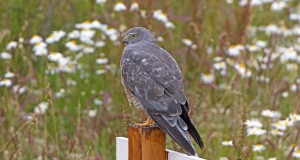
Governments at different levels in the United States have introduced various programs to promote alternative and renewable energies, reduce greenhouse gas emissions, and improve energy security. Some of these policy initiatives include mandates and tax credits to encourage the production of biofuels. As governmental efforts to promote renewable fuels as alternative sources of energy have evolved from subsidization to mandate, the production of biofuels has dramatically increased. The expansion of the mandate may contribute to reducing greenhouse gas emissions, but biofuels may be technically, economically, and environmentally inefficient. This 4-page fact sheet written by Zhengfei Guan and Juhyun Oh and published by the Food and Resource Economics Department reviews and discusses current US biofuel policies and explores potential outcomes.
http://edis.ifas.ufl.edu/fe974
The Green-Spore Poison Parasol Mushroom,Chlorophyllum molybdites
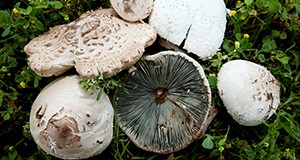
The “false parasol” or “green-spored parasol” mushroom (Chlorophyllum molybdites) is a poisonous mushroom that is the most common cause of mushroom poisoning in the United States. This mushroom is widely distributed throughout Florida and the southeastern United States. It commonly creates a complete or incomplete “fairy ring” in lawns, grassy areas, and open woods. When mature, the green-spored parasol mushroom has a large cap, a ring around its stem, and a greenish color on the underside of its gills. This four-page fact sheet describes the morphology, ecology, and distribution of the green-spored mushroom as well as its toxicology and how to treat poisoning from this mushroom. Written by Lisbeth Espinoza and Matthew E. Smith, and published by the Plant Pathology department.
http://edis.ifas.ufl.edu/pp324
Why is Exposure to Nature Important in Early Childhood?
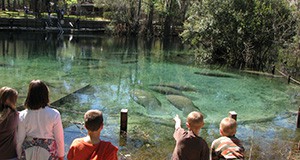
Early childhood is a crucial period for the physical and cognitive development of children. Most people who care for young children realize that children benefit from playing outside, but caretakers might not have ready access to the literature that supports their observations. This 4-page fact sheet written by Kristen Poppell and Martha C. Monroe and published by the School of Forest Resources and Conservation reviews some of the literature that shows that young children need to go outside and be around nature regularly. It describes some of the benefits children (and adults!) gain from learning and playing outdoors and includes suggestions for several resources for parents, teachers, and caretakers who hope to increase these opportunities for their youngsters.
edis.ifas.ufl.edu/fr394
Facts about Wildlife Diseases: Leprosy
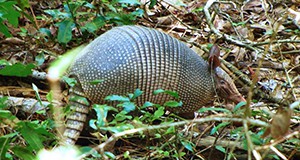
Worldwide, 250,000 new cases of leprosy are reported each year, and in the United States, approximately 150 new cases of leprosy are diagnosed each year. Also known as Hansen’s disease, leprosy (Mycobacterium leprae) is a bacterial disease that infects the skin and nerves, causing disfiguring skin sores, nerve damage, and occasionally lung damage if left untreated. Leprosy is spread between humans via respiratory droplets when people sneeze or cough. In the southeast United States, handling armadillos is thought to be the source of many infections. This 4-page fact sheet written by Shannon P. Moore and Samantha M. Wisely and published by the Wildlife Ecology and Conservation Department describes the disease in humans and armadillos and explains how to avoid it and limit its spread.
http://edis.ifas.ufl.edu/uw408
New & Revised Featured Creatures Publications
- Paper Wasp, Red Wasp (Suggested Common Names) Polistes carolina (L.) (Insecta: Hymenoptera: Vespidae)
- Broad-Tipped Conehead Katydid (suggested common name) Neoconocephalus triops (Linnaeus, 1758) (Orthoptera: Tettigoniidae: Conocephalinae)
- Viburnum Leaf Beetle Pyrrhalta viburni (Paykull) (Insecta: Coleoptera: Chrysomelidae)
- Strawberry Leafroller Ancylis comptana (Frölich) (Insecta: Lepidoptera: Tortricidae)
- Stable Fly Stomoxys calcitrans (L.) (Insecta: Diptera: Muscidae)
Conservation Subdivision: Post-construction Phase: Creating Signs to Educate Residents

Installing educational signs is one way to increase awareness and participation in conservation activities. This six-page fact sheet written by Mark Hostetler and published by the Department of Wildlife Ecology and Conservation explains how to create educational signs and install them in residential neighborhoods as a way to inform residents about biodiversity conservation. The fact sheet, one of the UF/IFAS Conservation Subdivision series, explains how to design effective signs, how to manage a series of signs to keep the information fresh, and how to maintain the signs to ensure that residents and visitors to the community continue to benefit and maintain their homes, yards, and neighborhoods sustainably for years to come.
http://edis.ifas.ufl.edu/uw407
Rancher Perceptions of the Coyote in Florida
Throughout the continental United States and large portions of Canada and Central America, changes people make to the landscape such as the clearing of forested land and the extermination of larger predators like gray and red wolves have made the environment perfect for the adaptive coyote. Coyotes have rapidly taken advantage of these environmental shifts and expanded into new areas, now including all 67 counties in Florida and even Key Largo. Each year more people in Florida catch a glimpse of a coyote crossing a road or running across open fields, or notice coyote scat along a hiking trail–and farmers and ranchers are seeing signs of coyotes on their farms.
As coyotes become a fixture of the Florida landscape, potential grows for conflict with humans. Coyotes are in Florida to stay, and understanding the agricultural community’s perception of their influence on livestock and wildlife is important to developing effective policies for coyote management. This 4-page fact sheet written by Raoul K. Boughton, Bethany Wight, and Martin B. Main and published by the Wildlife Ecology and Conservation Department provides results of ongoing statewide surveys of ranchers in Florida regarding the influence of coyotes on their operations.
Florida Biosolids: Rules for Biosolids Classes
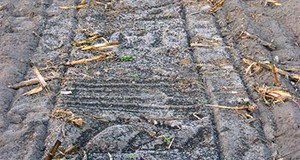 Biosolids are the liquid, semisolid, and solid fractions of the treated waste stream from a domestic waste water treatment facility. This 5-page fact sheet, part of the Florida Biosolids series, provides an overview of biosolids, biosolids classes, pathogen reduction, vector attraction reduction, and metal contaminants, and also discusses the purpose, applicability, and history of Chapter 62-640, Florida Administrative Code. Written by John Hallas, Ann C. Wilkie, and Cheryl L. Mackowiak, and published by the UF Department of Soil and Water Science, December 2015.
Biosolids are the liquid, semisolid, and solid fractions of the treated waste stream from a domestic waste water treatment facility. This 5-page fact sheet, part of the Florida Biosolids series, provides an overview of biosolids, biosolids classes, pathogen reduction, vector attraction reduction, and metal contaminants, and also discusses the purpose, applicability, and history of Chapter 62-640, Florida Administrative Code. Written by John Hallas, Ann C. Wilkie, and Cheryl L. Mackowiak, and published by the UF Department of Soil and Water Science, December 2015.
http://edis.ifas.ufl.edu/ss635
Native Aquatic and Wetland Plants: Duck Potato, Sagittaria lancifolia
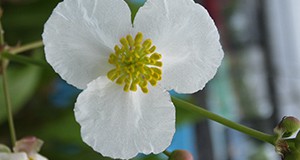 This 3-page fact sheet discusses the classification, description, habitat, propagation, and uses of duck potato, an aquatic perennial that typically grows in swampy ground or standing water in ponds, lakes, streams, and ditches and usually blooms in the spring. Written by Kimberly A. Moore, Luci E. Fisher, Carl J. Della Torre III, and Lyn A. Gettys, and published by the UF Department of Agronomy, December 2015.
This 3-page fact sheet discusses the classification, description, habitat, propagation, and uses of duck potato, an aquatic perennial that typically grows in swampy ground or standing water in ponds, lakes, streams, and ditches and usually blooms in the spring. Written by Kimberly A. Moore, Luci E. Fisher, Carl J. Della Torre III, and Lyn A. Gettys, and published by the UF Department of Agronomy, December 2015.
http://edis.ifas.ufl.edu/ag403
Native Aquatic and Wetland Plants: Cardinal Flower, Lobelia cardinalis
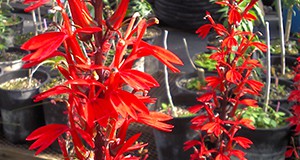 This 3-page fact sheet discusses the classification, description, habitat, propagation, and use of cardinal flower, an aquatic perennial that is commonly found in stream banks and swamps. Written by Kimberly A. Moore, Luci E. Fisher, Carl J. Della Torre III, and Lyn A. Gettys, and published by the UF Department of Agronomy, December 2015.
This 3-page fact sheet discusses the classification, description, habitat, propagation, and use of cardinal flower, an aquatic perennial that is commonly found in stream banks and swamps. Written by Kimberly A. Moore, Luci E. Fisher, Carl J. Della Torre III, and Lyn A. Gettys, and published by the UF Department of Agronomy, December 2015.
http://edis.ifas.ufl.edu/ag402
Native Aquatic and Wetland Plants: Blue-Eyed Grass, Sisyrinchium angustifolium
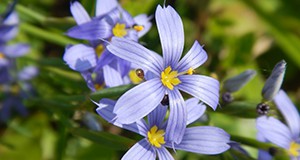 This 2-page fact sheet discusses the classification, description, habitat, propagation, and uses of blue-eyed grass, an aquatic perennial native to Florida. Written by Kimberly A. Moore, Luci E. Fisher, Carl J. Della Torre III, and Lyn A. Gettys, and published by the UF Department of Agronomy, December 2015.
This 2-page fact sheet discusses the classification, description, habitat, propagation, and uses of blue-eyed grass, an aquatic perennial native to Florida. Written by Kimberly A. Moore, Luci E. Fisher, Carl J. Della Torre III, and Lyn A. Gettys, and published by the UF Department of Agronomy, December 2015.
http://edis.ifas.ufl.edu/ag401
Zika, a Mosquito-Transmitted Virus
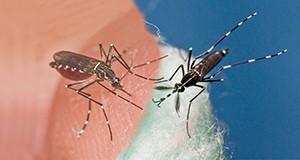
Zika is a mosquito-transmitted virus that has spread broadly in tropical regions and caused epidemics, especially in the past 8 to 9 years. In its native range in West Africa and Uganda, the Zika virus stays in the forest for the most part, and human infections are considered incidental and medically inconsequential. In 2015, however, Zika became a larger concern when a strain of the virus traced to outbreaks in French Polynesia emerged in northeastern Brazil. This strain provoked alarm because of increased incidence of microcephaly in babies born to Zika-infected mothers. Local transmission, mainly by the yellow fever mosquito Aedes aegypti, has now been documented in most tropical countries of the Americas but has not yet been detected in the continental United States. This 7-page fact sheet written by L. P. Lounibos, B. W. Alto, N. D. Burkett-Cadena, C. C. Lord, C. T. Smartt, C. R. Connelly, and J. R. Rey and published by the Department of Entomology and Nematology describes the Zika microbe, its mosquito hosts, and the disease it causes. A history of the virus and its migration are included, along with some details about the virus in the state of Florida and preventative measures people can take to avoid infection. The best way to avoid contracting Zika (and other mosquito-borne diseases) is not to get bitten in the first place. Take precautions to avoid mosquito bites.
http://edis.ifas.ufl.edu/in1120
See also 2/9/2016 press release:UF/IFAS scientists write document explaining Zika virus; urge vigilance.
El Zika, un Virus Transmitido por Mosquitos

Zika es un virus transmitido por mosquitos que se ha esparcido recientemente en regiones tropicales y ha causado epidemias, especialmente durante los últimos 8 o 9 años. En su ámbito nativo en África Occidental y Uganda, el virus se mantiene en los bosques, circulando entre mosquitos que viven en huecos de árboles y primates arbóreos; las infecciones de humanos se consideran incidentales y de poca importancia médica. Una cepa del virus que se implicó en brotes en Polinesia Francesa emergió en el Norte de Brasil en el 2015 y causó gran consternación debido a la alta incidencia de microcefalia en bebes nacidos de madres que fueron infectadas con el virus durante la gestación. Transmisión local, principalmente por el mosquito de la fiebre amarilla Aedes aegypti, ha sido documentada en la mayoría de los países tropicales de las Américas, pero aún no se ha detectado en Los Estados Unidos Continentales. Los síntomas de la infección incluyen, salpullido, dolor de cabeza, fiebre, dolor muscular y en las coyunturas, conjuntivitis, y malestar general.
This 7-page fact sheet written by J. R. Rey, L. P. Lounibos, B. W. Alto, N. D. Burkett-Cadena, C. C. Lord, C. T. Smartt, and C. R. Connelly and published by the Department of Entomology and Nematology is the Spanish language version of Zika, a Mosquito-Transmitted Virus and describes the Zika microbe, its mosquito hosts, and the disease it causes. A history of the virus and its migration are included, along with some details about the virus in the state of Florida and preventative measures people can take to avoid infection. The best way to avoid contracting Zika (and other mosquito-borne diseases) is not to get bitten in the first place. Take precautions to avoid mosquito bites.
http://edis.ifas.ufl.edu/in1121
Safe Harbor Agreement: A Regulatory Assurance under the Endangered Species Act
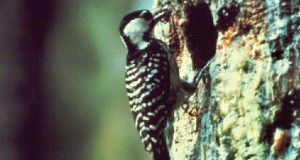
The involvement of the private sector is critical for the conservation and recovery of many species, but landowners’ fears that increased management restrictions could keep them from enjoying their land can present a challenge to securing their trust and assistance in conservation efforts. A Safe Harbor Agreement is a regulatory assurance that removes the risk of additional regulation in the future and encourages landowners to maintain important habitat on their lands. This three-page publication written by Melissa M. Kreye, Elizabeth F. Pienaar, Raoul K. Boughton, and Lindsey Wiggins and published by the Wildlife Ecology and Conservation Department provides Extension agents, decision-makers, and landowners with a basic understanding of a landowner’s obligations and the benefits of enrolling.
http://edis.ifas.ufl.edu/uw403
Basics of Quantifying N Sources and Fates on the University of Florida Campus
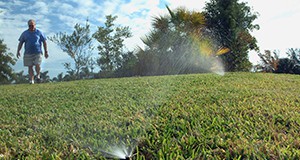 Landscapes, recreational areas, and sports fields are important parts of the University of Florida campus that receive nitrogen (N) fertilization to maintain the health and quality of their plants. However, nitrogen can be lost from the landscape through runoff in storm water or leaching into groundwater, both fates leading to pollution of the receiving water bodies. Human activities can also cause losses of nitrogen. Therefore, educating people about nitrogen cycling in the urban environment is critical for the development of solutions to the environmental problems caused by nitrogen loss. This 5-page fact sheet discusses nitrogen mass budgets, land uses in a major university, and nitrogen sources and fates associated with different land uses on campus. Written by Jiexuan Luo and George Hochmuth, and published by the UF Department of Soil and Water Science.
Landscapes, recreational areas, and sports fields are important parts of the University of Florida campus that receive nitrogen (N) fertilization to maintain the health and quality of their plants. However, nitrogen can be lost from the landscape through runoff in storm water or leaching into groundwater, both fates leading to pollution of the receiving water bodies. Human activities can also cause losses of nitrogen. Therefore, educating people about nitrogen cycling in the urban environment is critical for the development of solutions to the environmental problems caused by nitrogen loss. This 5-page fact sheet discusses nitrogen mass budgets, land uses in a major university, and nitrogen sources and fates associated with different land uses on campus. Written by Jiexuan Luo and George Hochmuth, and published by the UF Department of Soil and Water Science.
http://edis.ifas.ufl.edu/ss641
